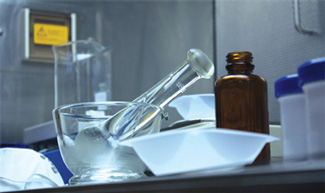Some compounding may be allowed, even if still illegal
Compounding animal-use drugs from bulk active pharmaceutical ingredients will continue to be illegal but will be allowed under certain circumstances.
In a draft guidance document published in May, the Food and Drug Administration stated that it will decide whether to enforce the prohibition against compounding of animal-use drugs from bulk drug substances on the basis of various factors, including who makes the drug, whether the drug is dispensed in response to a prescription, which species is receiving the drug, and how the compounded drug and active ingredients compare with FDA-approved drugs.
 “FDA recognizes that there are circumstances where there is no drug available to treat a particular animal with a particular condition, because either no drug is approved for a specific animal species or no drug is available under the extralabel drug use provisions,” the draft guidance document states. “In those limited circumstances, an animal drug compounded from bulk drug substances may be an appropriate treatment option.”
“FDA recognizes that there are circumstances where there is no drug available to treat a particular animal with a particular condition, because either no drug is approved for a specific animal species or no drug is available under the extralabel drug use provisions,” the draft guidance document states. “In those limited circumstances, an animal drug compounded from bulk drug substances may be an appropriate treatment option.”
But unrestricted compounding from bulk drug ingredients could harm animals and humans as well as undermine incentives to develop new drugs under the existing approval process, the document states.
In a statement, Dr. Bernadette Dunham, director of the FDA Center for Veterinary Medicine, said a final version of the guidance “will help to ensure that animal drugs compounded from bulk drug substances are available for patient care without compromising the animal drug approval process or jeopardizing the safety of the food supply.”
If a drug were compounded by a veterinarian, for example, the FDA could waive enforcement if the drug was intended to treat a specific nonfood animal, distinguishable from any comparable FDA-approved drugs in ways that produced a clinical difference for the patient, produced in the absence of an FDA-approved alternative, compounded in accordance with U.S. Pharmacopeial Convention standards, made from bulk active ingredients that were produced in registered establishments and accompanied by a certificate of analysis, administered by the veterinarian or distributed to the animal owner or caretaker, and labeled with the species and name of the patient and name of the owner or caretaker. Any defects or serious adverse events also would need to be reported to the FDA within 15 days after the veterinarian became aware of those problems.
The draft guidance, “Compounding Animal Drugs from Bulk Drug Substances,” is available as a PDF file at jav.ma/1FF58kG. The agency is accepting comments here under docket number FDA–2015–D–1176, and those submitted by Aug. 17 will be considered when work begins on the final document.
The agency also is seeking submissions for a list of bulk drug substances that could be used by outsourcing facilities to compound drugs for administration to animals. That proposal also is available here, under docket number FDA-2015-N-1196.
Related JAVMA content:
Unraveling the confounding world of compounding (March 1, 2013)